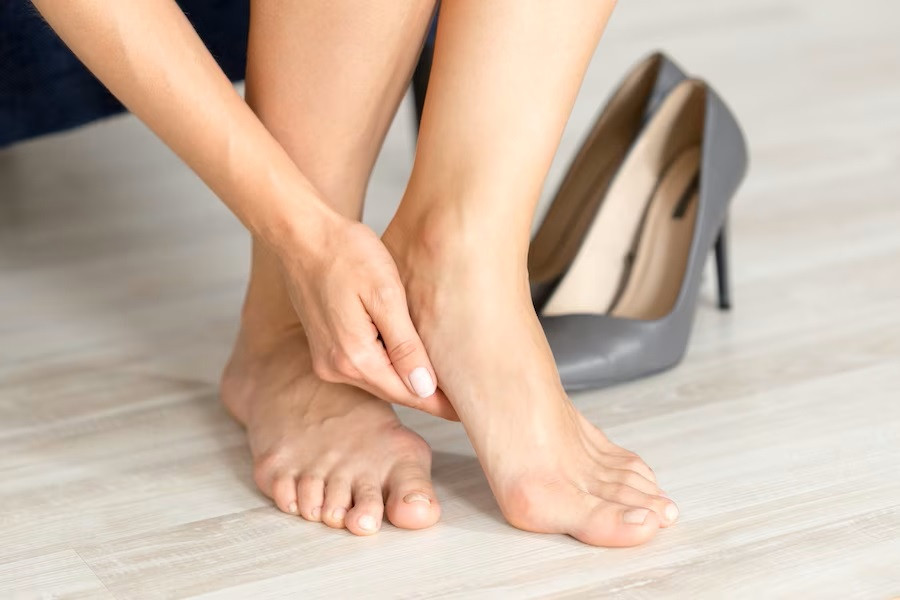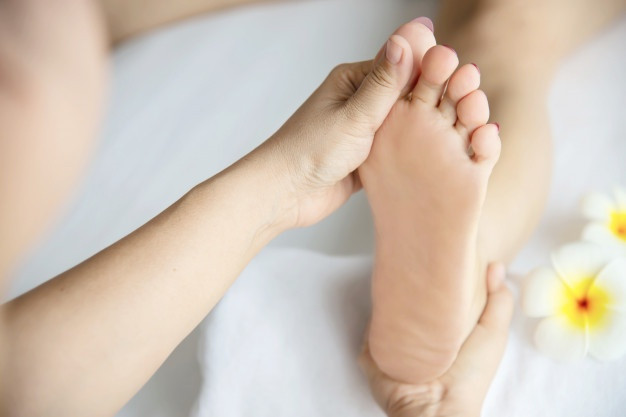Kaki kram di malam hari terutama yang dirasakan di betis dan menyebar ke kaki sering disebut dengan nocturnal leg cramps. Tidak diketahui pasti apa penyebab kram kaki tersebut. Namun, kram ini sering kali mengejutkan dan mengganggu tidur Anda.
Para ahli berpendapat bahwa kram kaki di malam hari mungkin dipengaruhi oleh beberapa faktor seperti pengobatan yang diminum, kehamilan, dehidrasi, berdiri terlalu lama, kelelahan setelah berolahraga dan juga konsumsi alkohol.
Cara Mencegah Kaki Gampang Kram di Malam Hari
Kram kaki di malam hari bisa sangat mengganggu dan menyebabkan sulit tidur kembali. Untuk itu, ikuti beberapa langkah berikut untuk menguranginya.
Menjaga hidrasi
Dehidrasi adalah salah satu faktor yang dapat menyebabkan kram kaki di malam hari. Ketika tubuh kekurangan cairan, keseimbangan elektrolit dalam otot bisa terganggu dan menyebabkan otot menjadi lebih rentan terhadap kram.
Untuk itu Anda perlu minum air secara konsisten sepanjang hari dan menjaga hidrasi tubuh. Hidrasi yang baik membantu menjaga fungsi otot yang optimal dan dapat mengurangi kemungkinan kram otot.
Juga penting untuk minum air lebih banyak setelah melakukan aktivitas berat atau saat beraktivitas di luar ruangan dalam cuaca panas.
Melakukan peregangan rutin
Peregangan adalah salah satu cara efektif untuk mengurangi frekuensi dan intensitas kram kaki. Melakukan peregangan rutin sebelum tidur dapat meningkatkan fleksibilitas otot dan mengurangi ketegangan yang dapat menyebabkan kram.
Selain itu, ketika kram kaki terjadi, meregangkan otot yang kram dapat membantu meredakan rasa sakitnya lebih cepat.
Baca Juga: Cara Mengatasi Kram Otot Setelah Berolahraga
Mandi air hangat
Mandi air hangat membantu mengendurkan otot yang tegang dan mengurangi ketegangan sehingga membantu mencegah terjadinya kram selama tidur. Mandi air hangat juga memiliki efek relaksasi yang dapat membantu mengurangi stres dan kecemasan yang mungkin memengaruhi tidur Anda.
Anda juga bisa menambahkan garam Epsom dalam air mandi Anda atau digunakan sebagai rendaman untuk mencegah terjadinya kram dan meredakan nyeri otot. Garam Epsom mengandung magnesium sulfat yang penting untuk fungsi otot yang sehat.
Pijatan teratur
Pijatan secara teratur sebelum tidur, baik itu dilakukan sendiri atau dengan bantuan orang lain, dapat menjadi bagian dari rutinitas tidur yang membantu mengurangi risiko kram kaki dan meningkatkan kualitas tidur Anda secara keseluruhan.
Pijatan di betis atau kaki akan mengendurkan otot yang tegang dan meningkatkan sirkulasi darah ke daerah tersebut.
Baca Juga: Inilah Manfaat dan Risiko Berjalan Tanpa Alas Kaki bagi Kesehatan
Berjalan dengan tumit
Teknik berjalan dengan tumit saat mengalami kram betis memang bisa memberikan bantuan sementara dengan mengurangi ketegangan pada otot yang kram. Meskipun tidak seefektif peregangan dalam jangka panjang, berjalan dengan tumit bisa membantu memperbaiki aliran darah ke otot yang kram dan merangsang relaksasi otot secara singkat.
Apabila Anda sudah mencoba langkah-langkah di atas, tetapi kram di kaki tidak membaik dan masih sering terjadi, sebaiknya periksakan diri ke dokter. Kram kaki mungkin menjadi gejala kondisi yang lebih serius seperti sirosis hati, penyakit ginjal, osteoporosis, penyakit jantung, kerusakan saraf kaki, gangguan sirkulasi darah atau penyempitan saluran tulang belakang. Diskusikan dengan dokter untuk mendapatkan evaluasi menyeluruh dan rekomendasi pengobatan yang tepat.
Memiliki pertanyaan lain seputar kram kaki di malam hari? Anda bisa memanfaatkan layanan konsultasi kesehatan dengan mengunduh aplikasi Ai Care melalui App Store atau Play Store.
Mau tahu informasi seputar penyakit lainnya? Cek di sini, ya!
- dr. Monica Salim
Mayo Clinic (2023). Night leg cramps. Available from: https://www.mayoclinic.org/symptoms/night-leg-cramps/basics/causes/sym-20050813
Cleveland Clinic (2023). Leg Cramps. Available from: https://my.clevelandclinic.org/health/diseases/14170-leg-cramps
Jay Summer (2024). Leg Cramps at Night: Tips to Reduce Discomfort. Available from: https://www.sleepfoundation.org/physical-health/leg-cramps-at-night
Nancie George (2023). 6 Unusual Signs of Dehydration You Should Know About. Available from: https://www.everydayhealth.com/news/unusual-signs-of-dehydration/#tips-for-staying-hydrated
Elea Carey (2019). How to Stop Leg Muscle Cramps. Available from: https://www.healthline.com/health/pain-relief/how-to-stop-leg-muscle-cramps
Amanda Gonzalez (2022). What to Know About the Benefits of a Cold Shower vs. a Hot Shower. Available from: https://www.webmd.com/sleep-disorders/benefits-of-cold-vs-hot-shower











